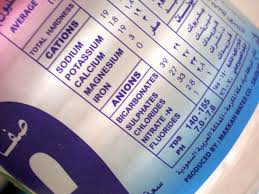
Fluoride and Your Teeth
The outer most layer of the tooth is called Enamel, its made up of closely packed mineral crystals. Due to the process of tear and wear of teeth every day, minerals are lost. Losing minerals is called demineralization. Gaining them back is called remineralization.
Due to bacteria in the plaque present in mouth demineralization begins . They feed on sugar and other carbohydrates in mouth and produce acids. The acids dissolve tooth enamel, this loss is permanent once we don’t use fluoride. Once we use fluoride the loss of enamel is balanced by remineralization. In this process, minerals in the saliva, such as fluoride, calcium and phosphate, are deposited back into the enamel.
Fluoride helps teeth in two ways. When children ingest or drink fluoride in small doses of course, it enters the bloodstream and becomes incorporated in the structure of their developing permanent teeth. Swallowed fluorides also become part of the saliva and strengthen teeth from the outside. And theirfor acids are less able to damage tooth enamel.
In addition, people apply fluoride directly to their teeth when they use a fluoride toothpaste or rinse or even can receive fluoride treatments from the dentist.
Fluoride safety
Fluoride is safe and effective when used wisely. All fluoridated bottled water are checked to maintain safe fluoride levels for drinking.
Toxic fluoride doses are based on weight. For example, the toxic dose of fluoride for a 2-year-old child weighing 22 pounds is 320 milligrams. For an 8-year-old child weighing 45 pounds, the toxic dose is 655 milligrams.
In comparison, an 8-ounce glass of water fluoridated to 1 part per million contains 0.25 milligrams of fluoride. Since these fluoride products are used in such small amounts, it is very difficult to receive toxic doses when using fluoride products at home.
Young children are more likely to swallow toothpaste after brushing instead of spitting it out. Use only a pea-sized amount of toothpaste when they brush( did explain this in one of the articles published earlier). Encourage children to spit out as much as possible and avoid flavored toothpastes if your child swallows it .
Swallowing toothpaste while teeth are developing can cause a cosmetic defect known as fluorosis. Mild fluorosis appears as white specks on the tooth. For many people this is not noticeable. Swallowing larger amounts of fluoride can cause “mottled” brown enamel.
Leave a reply →
Leave a reply